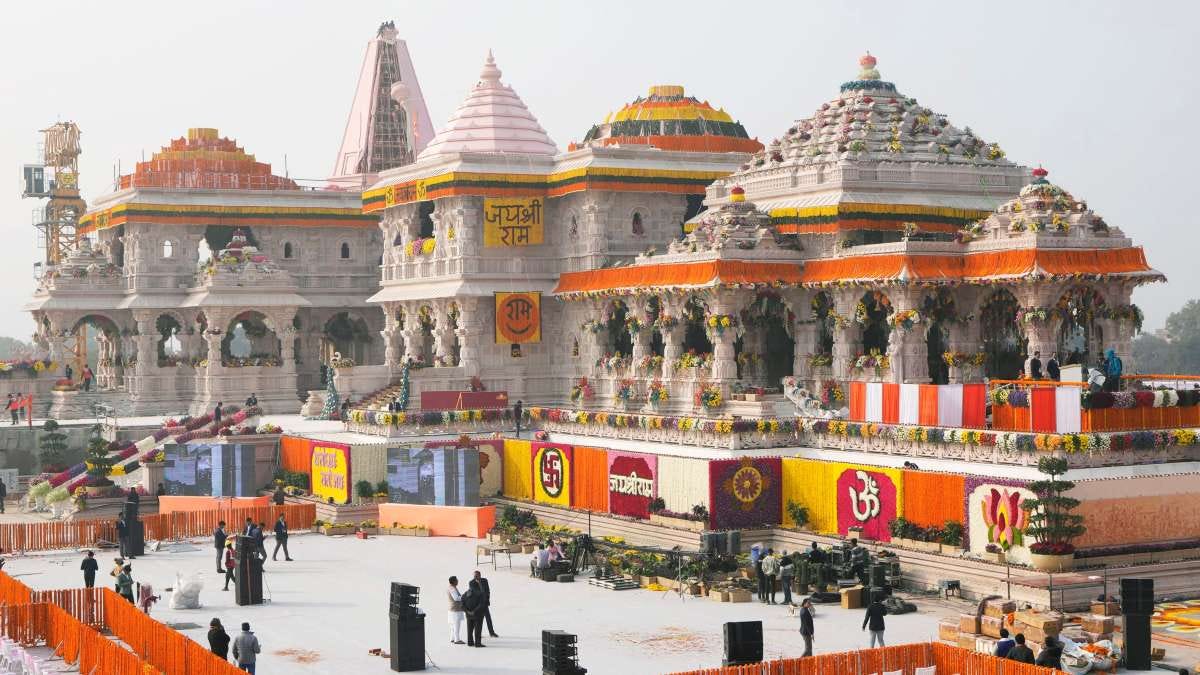
Ram Janmabhoomi Temple
The Ram Janmabhoomi Temple is believed to be the birthplace of Lord Rama, one of the most revered deities in Hinduism. The site has been a center of devotion for centuries and has a long and complex history, marked by its significance in religious and political events.
The original temple was said to have been built many centuries ago but was demolished during the Mughal period. The current temple construction began after the landmark Supreme Court verdict in 2019.
The temple is set to be an architectural marvel, reflecting ancient temple design while incorporating modern engineering techniques. The main temple will feature intricate carvings and towering spires, symbolizing the grandeur of Lord Rama's birthplace.
Hanuman Garhi
Hanuman Garhi is one of the most famous temples dedicated to Lord Hanuman. It is believed that Hanuman resided here to protect Ayodhya and Lord Rama's birthplace.
The temple dates back to the 10th century and is situated on a hill, requiring visitors to climb 76 steps to reach the main temple. The temple is known for its stunning architecture and religious significance.
The temple has a quadrangular shape with a circular fort and four bastions at each corner. The sanctum sanctorum houses a statue of Lord Hanuman holding a child Rama on his lap, which is unique to this temple.


Kanak Bhawan
Kanak Bhawan is often referred to as Sone-ka-Ghar (House of Gold). It is dedicated to Lord Rama and his consort Sita, and is believed to have been gifted to Sita by Queen Kaikeyi after her marriage to Lord Rama.
The temple was constructed in its current form by the Queen of Tikamgarh in 1891. It is adorned with beautiful idols of Rama and Sita dressed in gold ornaments.
The temple is known for its ornate design, with intricate gold-plated domes and pillars. The inner sanctum houses beautifully decorated idols of Rama and Sita, often draped in vibrant attire and jewelry.
Nageshwarnath Temple
Nageshwarnath Temple is dedicated to Lord Shiva and holds a special place in Ayodhya's religious landscape. It is believed that this temple was established by Kush, the son of Lord Rama.
According to legend, Kush lost his armlet in the Saryu River, which was later found by a Nag-Kanya (serpent maiden). As a token of gratitude, he built this temple for her as she was a devotee of Lord Shiva.
The temple features traditional North Indian temple architecture with a prominent shikhara (spire) and a spacious courtyard. The temple is adorned with paintings and carvings depicting scenes from Hindu mythology.


Treta Ke Thakur
Treta Ke Thakur is a temple that houses idols of Lord Rama, Sita, Lakshmana, Bharat, and Shatrughna. The temple is said to be located on the site where Lord Rama performed the Ashwamedha Yajna.
The idols in this temple are believed to be made of black sandstone and were established by Raja Vikramaditya. The temple is said to have been built about 300 years ago and was renovated in the 18th century by the Maratha queen, Ahilyabai Holkar.
The temple is built in a traditional style with a series of shrines housing the idols. The main idols are made from black sandstone, each intricately carved and representing the various forms of Lord Rama and his brothers.
Chhoti Devkali Mandir
This temple is dedicated to Goddess Ishani, who is believed to be the family deity (Kuldevi) of Lord Rama. The temple holds significant importance for locals and devotees.
The exact age of the temple is unknown, but it is considered ancient and is deeply rooted in the traditions of the region.
Chhoti Devkali Mandir is dedicated to Goddess Ishani, who is revered as the Kuldevi (family deity) of Lord Rama. The temple holds special significance for the local population and devotees of Lord Rama.

